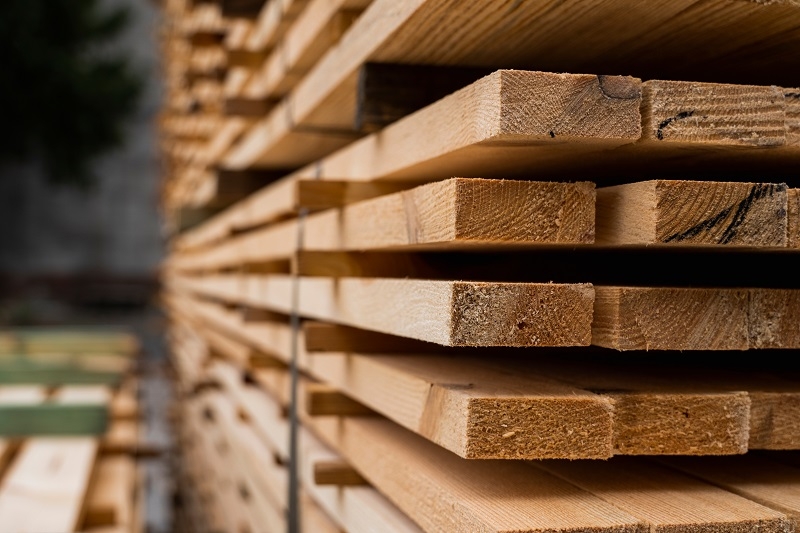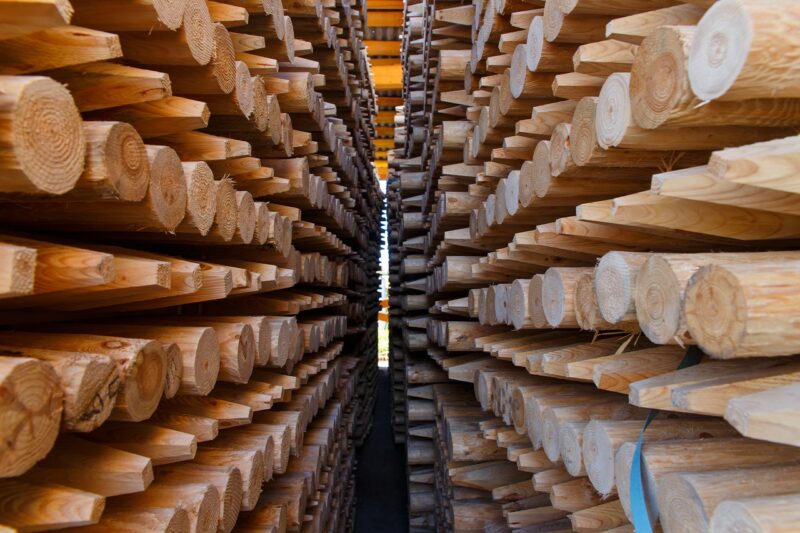Published: 25/06/24 By: Mike Bekin
If you have ever bought a board of timber, you will notice that it is labelled with key details. The timber species, certification marks, references and then a little code comprising a letter followed by two numbers which, to those not in the know, can be pretty confusing. What does it mean?
This is actually the strength grade of the timber, and it is pretty important if you want to know just how tough the wood you are looking at is.
To learn more, we have put together a complete guide to strength grading timber. From what this process involves to some of the most common misconceptions we hear, you can get to grips with the strength grading for a more informed timber purchase.
What is Strength Grading?
Strength grading determines how tough specific boards of timber are. Following the BS EN 338 and EN14081 specifications, individual batches of timber undergo different forms of testing to work out how strong the wood is, and a rating is then applied to let the customer know quickly the strength of the timber. This makes it a lot easier to match the correct timber to project requirements.
Timber strength classes are split into hardwoods and softwoods. For hardwoods, the grade begins with a ‘D’, which refers to the deciduous tree type from which hardwood is derived. The higher the number after the D, the stronger the timber is, with the grades available as follows: D24, D30, D40, D50, D60 and D70.
Softwoods use a ‘C’ instead of a ‘D’, as these timbers come from coniferous (evergreen) trees. The strength grading follows the same rules as for hardwoods, with higher numbers indicating stronger timber, and the grades are as follows: C14, C16, C18 and C24.
How is the Strength of Timber Determined?
There are two methods of determining the strength of a given timber, either through visual inspection or machine grading. Visual inspections, of course, are the more traditional way of determining timber strength, and they take into account all the visible characteristics of the timber which will affect the species’ natural strength, including:
- Knots
- Slope of grain
- Rate of growth
Machine grading on the other hand, uses machines to assess the timber. It is usually applied when large amounts of timber need to be graded from the same species. When a timber product has been machine graded, a letter ‘M’ will be printed below the strength grade.
What Are Grade Determining Properties?
In the UK, we follow European standards for strength grading timber (post-Brexit). This system sorts rectangular, cross-section timber into strength grades based on specific properties. These include bending strength and bending stiffness, as well as those characteristics used for visual inspections mentioned above (knots etc.).
All these properties are considered collectively to identify the strength class of the timber.

Common Strength Grading Misconceptions
Strength grading can be a confusing process when you are not familiar with it, and that has led to a lot of misconceptions. To clear things up, we have taken a look at some of the most common we see on a fairly regular basis.
Strength classes are not the same as durability classes
There are two different classes of grading systems for timber; strength and durability. These are not the same thing. While strength refers to how tough the timber is and (potentially) its load-bearing capabilities, durability classes look at how resistant the timber is to external threats. These include rot, insect attack and fungal infestation.
D24 and C24 aren’t the same thing
Because hardwoods and softwoods tend to have varying degrees of strength, C24 is not the same as D24. The two grades cannot be used interchangeably for the same construction project, so if you are used to D24, you cannot switch to C24 and expect the same performance.
Not all timber boards are tested
When there is a batch of timber from a species of tree within a single space, not all of those individual boards will be tested. Instead, some are removed from the batch and tested individually, and this is used to strength grade the entire load of timber products.
What’s Dry and Wet Graded?
You might have noticed that timbers can be both wet and dry graded, and this is true! Though timber is usually kiln dried to the required level of moisture (around 12%) before grading, it can also be graded wet. This does not mean the timber is visibly damp, but that its moisture content is relevant to the surrounding environment.
Which Method of Strength Grading is the Best?
Whether visual or mechanical strength grading is better depends on a few factors. The first is how many boards of timber need to be tested, with larger batches being better suited to mechanical grading as a larger sample can be analysed in a (typically) shorter amount of time. For smaller batches of timber, visual grading by a professional can be preferred to reduce the need for complex machinery.
But the key word there is ‘professional’. Anyone visually strength grading timber needs to be experienced in how this works, and confident in their skills. There Is little room for error where health and safety is concerned!
Which Timbers Are Strength-Graded and Why
Different species of timber bring widely different characteristics to construction projects, making it important you choose a suitable species. But even within the same species – or the same tree! – timber can have different properties (including both physical and mechanical). This means that all timber batches destined for construction products – e.g. timber decking, cladding and sleepers – need to be strength graded, even if they are from a super tough species such as Ekki.
Find Strong Timber at EcoChoice
At EcoChoice, all our timber is professionally graded to ensure we can match the right wood to the right project. If you are on the hunt for super strong timber which will handle plenty of wear and tear without a hitch, get in touch with our friendly team. We can tell you more about our products, match your requirements to the right timber, and start an order for your project today.
Tags: strength grading, Timber
Categories: Insights
